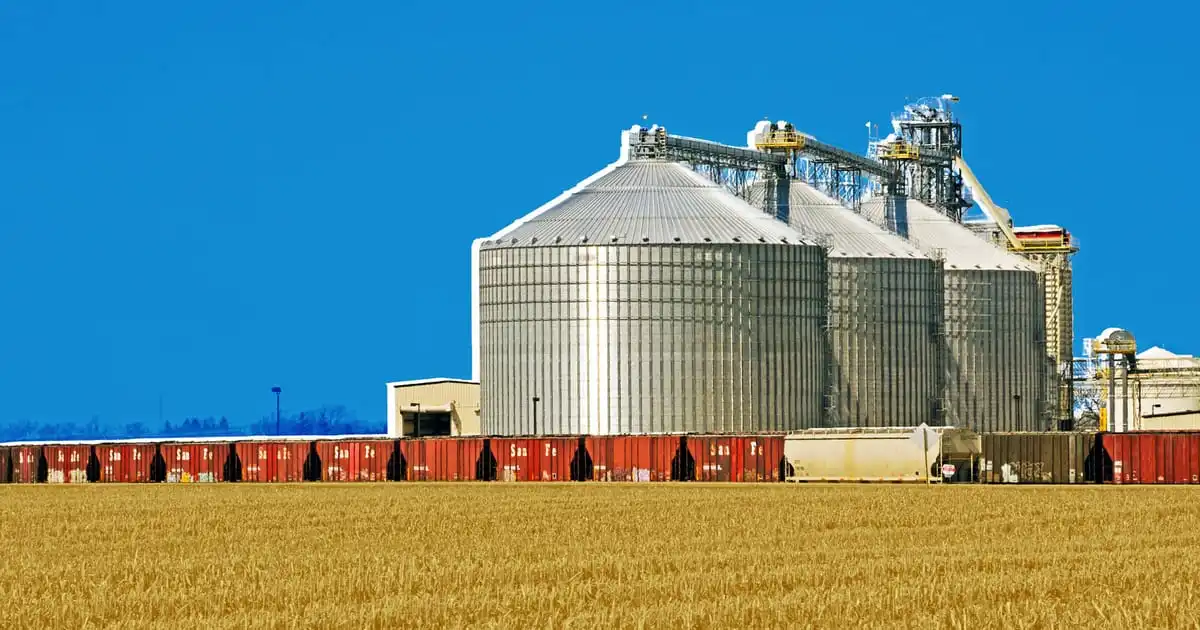US air travel can be decarbonized by replacing it with electrified passenger rail. Trains with a pantograph don’t need to store energy. Nearly all of the challenges of electrifying transportation are already solved and just require the infrastructure to be built.
Air travel should only be used for routes that cannot be serviced by electrified rail.
The problem isnt r ex ally about pollution, its about how to increase corn production for America.
America has many problems. A lack of corn isn’t one of them.
E85 was the first big push after “corn fed beef” was everywhere. Then it became sanitizer due to COVID.
Now that all of those are waning, something new IS needed for the industry to maintain its revenue expectations.
Its not about “lack of corn” its more akin to “how much more money can we make off the current volume of corn we push”
Guh. Can’t I go one day without being reminded that Capitalism is killing us?
Corn monoculture is at the heart of so many environmental problems, I very much doubt this is a sustainable route forward.
No. It can help in transition by lowering carbon emissions and reliance upon fossil fuels, but a product of burning ethanol is still CO2.
Bluntly: no.
Burning fuel puts CO2 into the atmosphere. Yes, you might be at close to net zero if it’s a biofuel (e.g., the carbon in the atmosphere goes into the corn, when then goes into the airplane and back into the atmosphere), but we need to be at negative carbon, not net zero.
If the fuel you were burning was liquid hydrogen, then we’d be okay. But any kind of hydrocarbon, regardless of the source, not so much.
Hydrogen is made using fossil fuel energy. Compressing it to liquid is, I believe, an expensive and inefficient process. There’s no magic solution unfortunately.
You can make hydrogen from water, using electricity generated from hydro, solar, wind, or nuclear. But it’s not a cheap, efficient process. Fundamentally, we need to rethink travel.
TBH, I don’t think that it’s going to matter though. Too little, too late. I’ll fight to the bitter end as best I can, but the time to fix this was 40 years ago.
~60% efficiency, I believe? Not far off from pumped hydro in terms of overall efficiency.
The extraordinary cheapness of solar energy has actually made some real green hydrogen commercially viable in the US, especially in conjunction with IRA subsidies. It’s hard to overstate how huge the inflation reduction act has been at promoting transition and renewable technology. The hopeful new tech developments in the field of green hydrogen would be “peaker” electrolyzers – current economics make it pretty hard to have a viable electrolysis plant without having it operate at very high utilization rates. Truthfully, the issue is more one of financing than technology, though tech developments could change that picture. Far better to run electrolyzers than curtail a renewable generation source and I have no doubt this will be a major transition industry.
The bigger issue is that there are no remotely viable hydrogen aircraft. Theoretically, maybe one day, but maintaining liquid hydrogen tanks is impractical even for automobiles. It makes even less sense in the goddamn sky. Revolutionary new tech would need to happen before this was a viable option for airlines. So this kind of plant is probably smarter to be producing e.g., ammonia, especially since some major shipping companies have already signed contracts to build ammonia-fuel cargo ships so the demand will definitely exist.
Unfortunately, there’s no carbon-free alternative to flying in the near future. Which is why the best approach is to minimize flying. The EU way is the right way; pick busy flight corridors and focus on them for high speed rail.
Now look at the top 3 US flight corridors. Last I looked, it was LA-Las Vegas, Hawai’i-Ohahu, and Atlanta-Orlando. Brightline is currently deploying high speed rail service for that first route. Flawed as hell service, but service nevertheless. The second is probably always going to be stuck to flight (but also, less tourism to the islands would benefit them tremendously either way). The third has huge potential to be built out into a rail corridor (Brightline Florida already has plans to expand to Jacksonville and an Atlanta-Savannah Amtrak route is already in development – would not be hard to close that gap).
Thanks for the informative comment, much appreciated.
I’ve also heard talk of hydrogen cargo ships but I don’t know if that’s realistic.
There’s also a container technology that’s been developed at Sheffield University, I believe. Each hydrogen molecule is held within its own container and it effectively becomes a liquid. Great for storage and transfer.
I couldn’t agree more, but I try not to think about it to much as I have teenage children. It’s bloody scary!
Ah, I think there’s a spelling mistake in the title - let me see if I can fix it for you:
Please give more money to the corn lobby
Remember, every time you use cropland for not-food, you’re worsening food security.
It’s not enough that you feeding food to food, and feeding food to cars, now it’s about feeding food to airplanes.
But corn subsidies must flow
BTW, can rapeseed oil be used for aviation fuel?
Probably, but soy is the one that’s being most converted into hydrocarbons in the US
Yeah, my thought was because of rapeseed oil being used for cars in some parts of the USSR in 70s and 80s.





